Pearl of East: Your travel guide in Uzbekistan.
|
Main Menu
Tashkent
Samarkand
Bukhara
Khiva
Baysun
Nukus
Margilan
Ferghana
Nurata
Namangan
Kokand
Sarmysh Say
Termez
|
News / НовостиUzbekistan: The NEW LIFE of Mamun Academy04/09/2015 20:33 On November 11,1997 issued a decree of the President of the Republic of Uzbekistan "On the revival of Khorezm Academy of Mamun." Today, this institution is a special education in domestic science, viable and stable developing.
Mamun Academy - one of the first instructive example of regional and international organizations, and conduct in-depth studies in various fields of science - has given impetus to the development of many disciplines: the basics of the national state, the study of historical and cultural monuments, the ecology of the region, land and water resources, and others. The research occupies an important place archeology among the various scientific. The results of the expedition of Khorezm Academy of Mamun demonstrated that in the early Iron Age - a period when the territory of Khorezm begins the process of urbanization, urban culture is formed, born statehood - in the south of the region there are the most ancient urban centers.
Archaeological expedition exploring religious building - temple, located in the center of the craft ceramic Humbuztepa. The presence of the altar, and especially planning, talking about his religious purpose connected with the worship of fire. Such structures are known on the territory of Central Asia and Uzbekistan, since the turn of our era to the early Middle Ages. All of them are interpreted by researchers as churches in which the rites of Zoroastrianism. Preliminary analysis of the findings made to date allows you to confidently remains of structures studied - V-IV centuries. BC. The available materials allow scientists to carry Humbuztepe church in one of the oldest known in Central Asia and the region, which was distributed to Zoroastrianism.
Research conducted under the grant "The origins of urban culture of ancient Khorezm" was recognized by scientists at Heidelberg and the University of Warsaw. Applied project "Archaeology" at the archaeological monuments Cat and Kala Zarlyk Ishan Baba found materials on the topography and fortifications. Discovered under the leadership of Sh Matrasulova ceramic findings are important in the study of the history of the emergence and development of medieval towns in the South Khorezm. In Khorezm Academy of Mamun done extensive work on the study of historical works. For example, Abu Rayhan Biruni work "Tafhim", as well as commentary written for the work of Abu Nasr ibn Iraq, "Manana-us"was translated from Arabic into Uzbek and analyzed scientifically. Abstract written literature, myths and legends contained in the unique monuments of writing "Avesta". By analyzing oral and written samples studied especially literary and artistic languages. Prepared a monograph on "The history of ancient civilization and statehood in the Khorezm oasis" was written popular science book, which was prepared on the basis of the electronic version of a textbook. Prepared for publication under the direction of Professor M. Iskhakov monograph titled "Ancient Khorezm Urbanism: capital city and fortress, history of building technology." Scientists led by the candidate of historical sciences A. Abdurasulova comprehensively researched material about living in the region of ethnic groups and nationalities, their traditional customs and culture. Prepared review extant literature on the life science and medical practice Abu Sahl ibn Isa al-Yahya al-Masihi Jurjani. Compiled list and bibliography of scientific papers Al-Masihi. Studying the history of mentoring among scholars of Khorezm Mamun Academy and its scientific organizational value. From the book Masihi "Ilmi and Qutub-fi-at-sinaat tibbiya" ("The book consists of 100 chapters of the medical art") have been translated from Arabic into Uzbek language 428 pages, 36 chapters, which are then compared with the heads of the scientists' Canon of Medicine "Abu Ali Ibn Sina and" Zakhirai Khorezmshahs "Ismail Jurjani. When it comes to priorities and prospects of development of scientific research in the first place is worth mentioning archaeological excavations Humbuztepa artisan center, as well as the Mound Khazarasp and Tash-Kala. The results allow to reconstruct the little-known pages of history of ancient Khorezm - the story of the process of urbanization, the emergence and development of the city and settled agricultural culture, crafts, spiritual and religious life. Khorezm Mamun Academy actively collaborates with more than 40 research institutes and universities in the country, as well as nearly 20 foreign scientific institutions. A partnership with the University of the Sorbonne and the French Academy of Sciences, the Egyptian Ain Shams University, Korea University, Ken-Chi, the Royal Research Center Faysal in Saudi Arabia and others. The cooperation conducted research projects, seminars on exchange of experience, measures to improve the training of personnel. |
Calendar
Weather
Useful Links
Searching for Airways and Hotels
|

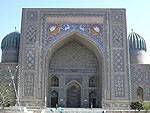
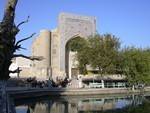
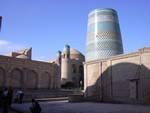
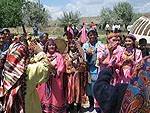
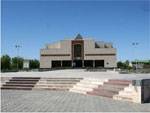
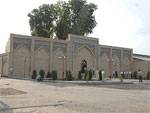
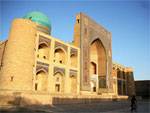
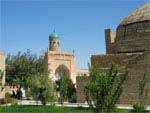
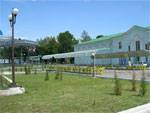


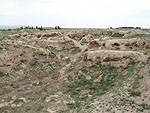
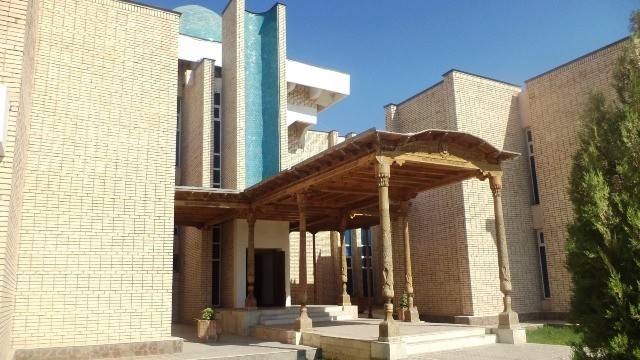
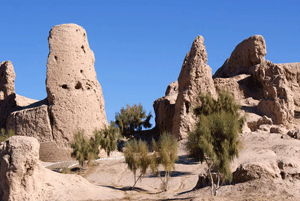 Thanks to the work done in the course of the expedition the world-famous monuments of ancient Khorezm got - and Kyuzeligyr Dingildzhe (VII - V centuries. BC). Studied by researchers settlement Humbuztepa, where they found materials VII - VI centuries. BC joins chain of the most ancient monuments on the territory of Khorezm, locating the center of the emergence of urban culture on its southern borders. Submissions received on the territory of Khazarasp say that in the south and in the VI BC was a major urban center. As a result of large-scale works produced materials, the scientific world have opened new information about ancient history, funerary rites and cults common in the territory of the oasis. Submissions received in cemeteries Meshekli and Uch Ochakov belonging to the Bronze Age, (XVI - XIII cc. BC) made it possible to assert that the territory of the South Khorezm at the time was inhabited by tribes of pastoralists - carriers Andronov Culture.
Thanks to the work done in the course of the expedition the world-famous monuments of ancient Khorezm got - and Kyuzeligyr Dingildzhe (VII - V centuries. BC). Studied by researchers settlement Humbuztepa, where they found materials VII - VI centuries. BC joins chain of the most ancient monuments on the territory of Khorezm, locating the center of the emergence of urban culture on its southern borders. Submissions received on the territory of Khazarasp say that in the south and in the VI BC was a major urban center. As a result of large-scale works produced materials, the scientific world have opened new information about ancient history, funerary rites and cults common in the territory of the oasis. Submissions received in cemeteries Meshekli and Uch Ochakov belonging to the Bronze Age, (XVI - XIII cc. BC) made it possible to assert that the territory of the South Khorezm at the time was inhabited by tribes of pastoralists - carriers Andronov Culture.
